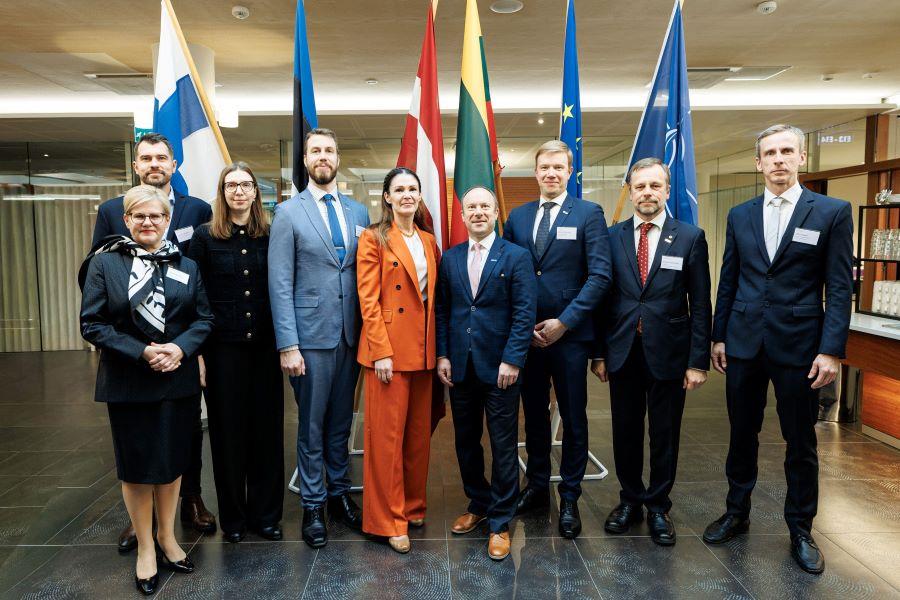Geopolitical tensions spur Finland’s shift toward continental rail integration

Earlier this year, Finland announced its intention to adopt the European standard rail gauge as part of its broader strategy to enhance national security, military mobility, and international connectivity. This decision addresses one of the key challenges within the TEN-T North Sea–Baltic Corridor: the lack of interoperability caused by differing rail gauges.
Currently, most EU member states operate on the European standard gauge of 1,435 mm. However, Finland, Estonia, Latvia, and Lithuania continue to use the wider Russian gauge, which poses a significant barrier to seamless rail transport across borders. Ukraine, while not an EU member, is also part of the North Sea–Baltic Corridor.
This landscape is beginning to shift with the development of Rail Baltica—one of the largest infrastructure projects in the Baltic region.
Finland: military mobility as a strategic priority
LTG Infra, the infrastructure company within the LTG Group responsible for implementing the project in Lithuania, emphasizes that the full potential of the Rail Baltica project can only be realized through integration with neighboring countries.
Poland already operates a fully developed European standard 1435 mm gauge network. Meanwhile, Finland is evaluating the strategic need for continental rail connections and exploring the development of a European gauge system to enhance military mobility.
In 2025, Minister of Transport and Communications of Finland Lulu Ranne announced the country's intention to adopt the European standard railway gauge. This decision aligns with Finland’s priorities following its accession to NATO, focusing on strengthening national security, military mobility, and international connectivity.
Minister Ranne emphasized the value of Baltic–Finnish cooperation and the shared goal of developing future-proof infrastructure. She noted that Finland is following the progress of Rail Baltica with great interest, saying, “It is important that we share information, understand where we stand, and cooperate now more than ever. In Finland, we are prioritizing infrastructure that strengthens everyday life and crisis readiness. Europe requires swift action, including joint efforts to ensure military security. The Baltic and Nordic countries are in the same boat, and we stand together with other European countries as well.”
Bridge or tunnel?
Policymakers, business leaders, and experts from across Northern Europe gathered in Helsinki to discuss whether dual-use infrastructure could effectively serve both security and economic growth in the region. The experience of Ukraine has underscored the critical importance of cross-border logistics, and Rail Baltica, as a strategic project, is positioned to contribute significantly to long-term regional security.
According to Edvilas Raudonikis, Lithuania’s Ambassador to Finland, closer cooperation between Finland and the Baltic States, aimed at full integration into the European transport network, would unlock new opportunities for businesses across all participating countries.
“Rail Baltica would provide Finland with strategic advantages and reliable land-based alternatives to sea routes, while also opening access to new markets,” said Ambassador Raudonikis. “Since the majority of Finland’s exports currently transit via the Baltic Sea, the country is strategically evaluating more resilient land-based connections. Rail Baltica offers a direct continental link. This corridor could complement the Baltic market and deliver broader benefits for business. From a military mobility perspective, the long-term vision includes connecting Tallinn and Helsinki.”
A frequently debated strategic question remains: would a bridge or a tunnel between Tallinn and Helsinki be more viable? According to experts, neither option is currently a realistic plan, but the strategic vision persists. The EU’s objective of a unified railway structure remains a shared priority across member states.
Justas Vyžintas, Head of Rail Baltica Management at LTG Infra, highlighted Lithuania’s tangible progress in the project to Finnish partners:
“By the end of this year, construction will be underway on a 114 km section in Lithuania. In parallel, we are advancing work on the superstructure and track laying. Our priority is the development of international infrastructure, and our key message is that Rail Baltica is a gateway to the broader European rail network,” said Vyžintas.
Business: an alternative to sea routes is needed
Finland currently operates on a 1524 mm railway gauge, originally introduced during the Tsarist Russian era in line with the standards of that time. Later, Russia adjusted this standard to 1520 mm.
In 2025, Finland conducted a study on its northern railway lines and the potential for European gauge connections with Sweden. The study proposed a dual-gauge system (1435 mm + 1524 mm) to accommodate both standards. To date, only the northern lines have been evaluated, and further assessments are required for other potential connections.
Ulla Heinonen, Director of Green Growth at the Confederation of Finnish Industries, reflected on the Finnish business community's view of strengthening international transport links and the need to deepen integration into the European network. According to Heinonen, Finland exports almost 100% of its cargo by sea. Seeing the uncertain situation on the sea routes, businesses are considering alternatives that would allow them to transport cargo quickly and safely and reduce emissions. Given the current geopolitical situation, both good international connectivity and resilience would have a positive impact on business, the economy, and Finland's competitiveness.
Rail Baltica is a strategic project for both the LTG Group and the European Union and is the largest railway infrastructure project in the history of the Baltic States. Once completed, it will deliver an electrified European standard gauge railway line connecting Lithuania, Latvia, and Estonia with Central and Western Europe, strengthening regional integration, civil and military mobility, and the overall resilience of the transport system.








